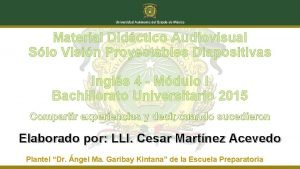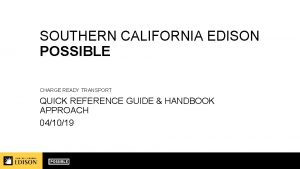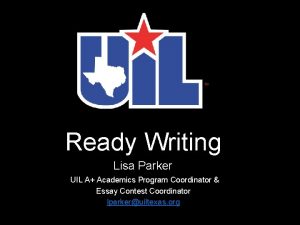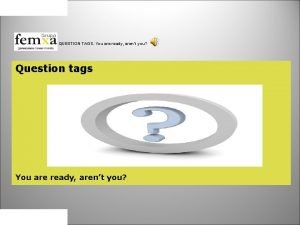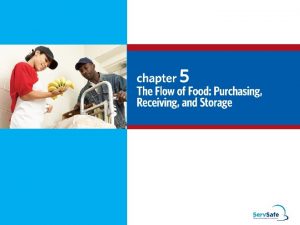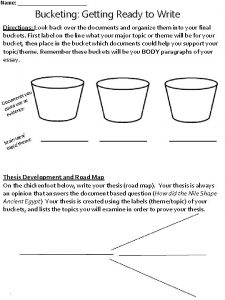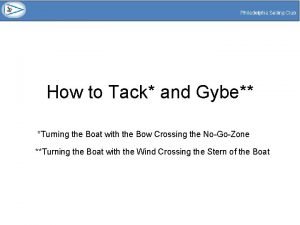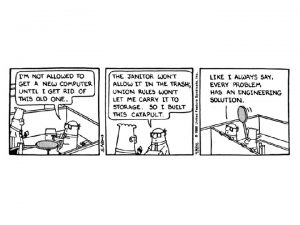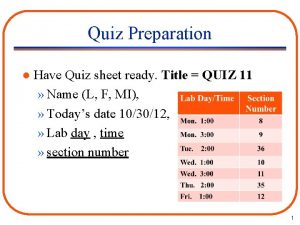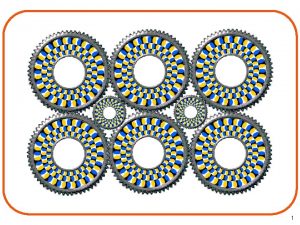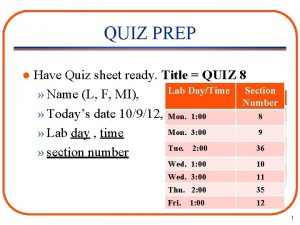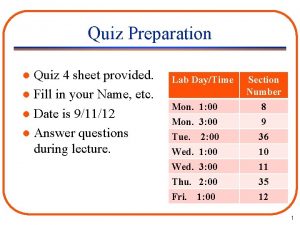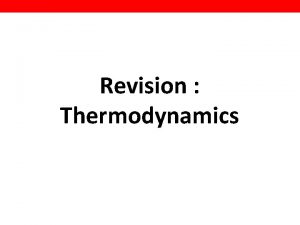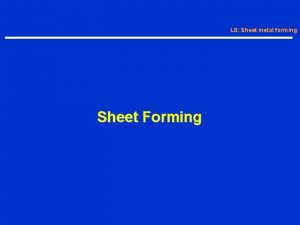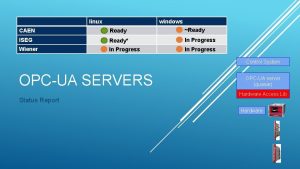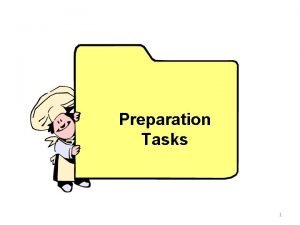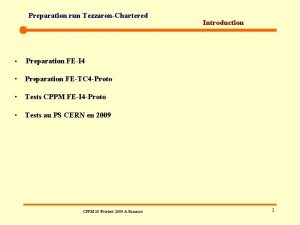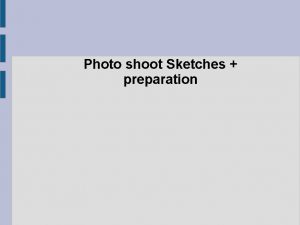Quiz Preparation Have Quiz sheet ready l Top




































- Slides: 36

Quiz Preparation Have Quiz sheet ready. l Top Center: QUIZ 3 l Upper Right: » Name (L, F, MI), » Today’s date 9/4/12 » Lab day , time » section number l Lab Day/Time Mon. 1: 00 Mon. 3: 00 Tue. 2: 00 Wed. 1: 00 Wed. 3: 00 Fri. Thu. 1: 00 2: 00 Thu. 2: 00 Fri. 1: 00 Section Number 8 9 36 10 10 11 11 12 29 35 12 12 1

Announcements l Read Chapter 6 before lab. l Work problems at the end of the Chapter 6 for practice. Solutions on web site. l Be sure to do the Pre-Lab assignment. You will lose in-lab points if you do not have the pre-lab worked when you arrive at lab. 2

Electricity – Water Analogy l Electricity flows through a circuit like water through a pipe. » charge -- # of water molecules in the pipe » current -- water flow rate (gallons per minute) » voltage – pressure (psi = pounds per square inch) » resistance -- resistance to flow (inverse of pipe cross-sectional area) » capacitance -- water stored under pressure (e. g. a bladder tank) 3

Units charge -- coulombs (C) l current -- amperes (A), A=C/s l voltage -- volts (V) l resistance -- ohms ( ), =V/A l capacitance -- farads (F), F = C/V Note: Farads are huge units -- usually use F (microfarads) l 4

Circuit Elements l voltage source (e. g. battery) – like water pump with specified pressure. Units: volts (V) 5

Circuit Elements l resistor -- pipe with small cross-sectional area that impedes water flow. Units: ohms ( ) Wire can be viewed as a resistor with very low or zero resistance. 6

Circuit Elements l CAPACITOR – a reservoir or sponge that can store water (charge). Units of capacitance: Farads (F) 7

Circuit Elements l diode -- valve that only allows current flow one direction. (No units) current 8

Quiz l 1. Electric current is analogous to: » a. water pressure » b. water flow rate » c. # of water molecules in the pipe l 2. Voltage is analogous to: » a. water pressure » b. water flow rate » c. # of water molecules in the pipe 9

Ohm’s Law l The current I flowing through a resistor is proportional to the voltage V across it and inversely proportional to the resistance R: or 10

Ohm’s Law - Example I 100 + 5 V - Always: ·Label current directions ·Put +/- signs on voltages I = 5/100 = 0. 05 A Passive sign convention: place the positive voltage reference at the same terminal that the current enters 11

Quiz 3. The current I is (a) 100 A (b) 0. 01 A (c) -10, 000 A I 1000 + 10 V - 12

Connection Types l Series (daisy chain) l Parallel (side by side) 13

Series Connection l Single branch. Current is the same through all elements. I 14

Series Connection l Resistors add in series. Ex: R 1=50 , R 2=100 R=150 15

Multiple Voltage Sources l Multiple voltage sources in series add. l These circuits are equivalent. 16

Wait – I thought they ADDED! 10 + 4 = 6? l Have to look at the polarity l + 10 - 1 k 4 + 17

Parallel Connection l Multiple branches connected at both ends. The voltage is the same across all elements. 18

Parallel Connection l The reciprocal of resistance adds. » For two resistors only = product / sum Ex: R 1=50 , R 2=100 R=(50)(100)/150=33. 33 19

Series vs. Parallel l. Are the lights in your house/apartment wired in series or parallel? Answer: Parallel! 20

Voltage Division (wire) (motor) • If R 1 represents the wire resistance and R 2 represents the motor and motor circuit resistance, we want R 1 to be as small as possible. This will deliver the maximum voltage to the motor. 21

Voltage Division - Example 10 15 V 20 22

Resistors in Parallel - Example I 1 I 2 Vo l What is the current in each branch? 23

Resistors in Parallel - Example I 1 I 2 Vo l Voltage is the same across each branch– use Ohm’s law: 24

Resistors in Parallel - Example I 1 Vo 15 V l I 2 10 20 Ohm’s law 25

Series/Parallel Example I 1 l I 2 What is the current in each branch? 26

Series/Parallel Example I 1 I 2 2 k l Combine the two 1 kΩ resistors in series. 27

Diode Example + VR Vo l R I What is the current in the circuit (I) and the voltage drop across the resistor (VR)? 28

Diode Example + VR Vo R I VD=0. 7 V 29

Diode Example + VR 9 V 1 k I VD=0. 7 V 30

Breadboards l Used for rapid prototyping » Easier & faster than soldering » Allow for easy alterations Generally for temporary use l Components just plug in l 31

How a Breadboard Works Connect components by plugging them in l Components are connected by copper wires underneath holes l 32

Connecting Resistors in Series 33

Connecting Resistors in Parallel 34

Quiz 4. Voltage division is used (a) to find the voltage across a single element in a series circuit (b) to find the voltage across a single branch in a parallel circuit (c) to determine the fair allocation of batteries in a team-based design 35

Quiz 5. Current division is used (a) to find the current through a single element in a series circuit (b) to find the current through a single branch in a parallel circuit (c) to determine the fair allocation of batteries in a team-based design 36
 Stay ready to keep from getting ready
Stay ready to keep from getting ready Is a prism having six square faces 12 edges and 8 vertices
Is a prism having six square faces 12 edges and 8 vertices Stock verification surplus
Stock verification surplus How many bottom teeth do humans have
How many bottom teeth do humans have Stanza in poetry
Stanza in poetry Words have meaning and names have power
Words have meaning and names have power Bill a no mail on saturdays worksheet answers
Bill a no mail on saturdays worksheet answers Modal verbs suggestion
Modal verbs suggestion It is not you they are rejecting but me
It is not you they are rejecting but me I have resolved
I have resolved Ideas have consequences bad ideas have victims
Ideas have consequences bad ideas have victims Presente simple en ingles
Presente simple en ingles I have four legs and a tail i have no teeth
I have four legs and a tail i have no teeth Would is past tense of will
Would is past tense of will A(n) _____ has an endoskeleton and usually a spiny skin.
A(n) _____ has an endoskeleton and usually a spiny skin. Kronos middleware
Kronos middleware Ready to be evaluated pqeb
Ready to be evaluated pqeb Pa career ready skills continuum
Pa career ready skills continuum Charge ready transport
Charge ready transport An/pyq
An/pyq Ruckus networks distributors
Ruckus networks distributors Uil ready writing winning essays
Uil ready writing winning essays Ready set go transition inventory
Ready set go transition inventory Who are the gods of the north ready player one
Who are the gods of the north ready player one Leopardon ready player one
Leopardon ready player one Ready mix concrete definition
Ready mix concrete definition I am right question tag
I am right question tag Ready to eat tcs food
Ready to eat tcs food Ready for invalsi oxford 3a soluzioni
Ready for invalsi oxford 3a soluzioni Once upon a time there was a child ready to be born
Once upon a time there was a child ready to be born Kpu nurse ready
Kpu nurse ready Big 6 illnesses
Big 6 illnesses Bucketing getting ready to write answer key
Bucketing getting ready to write answer key Ready, get set, kahoot
Ready, get set, kahoot Hybrid cloud ready
Hybrid cloud ready How to tack
How to tack Pal ready drink
Pal ready drink











